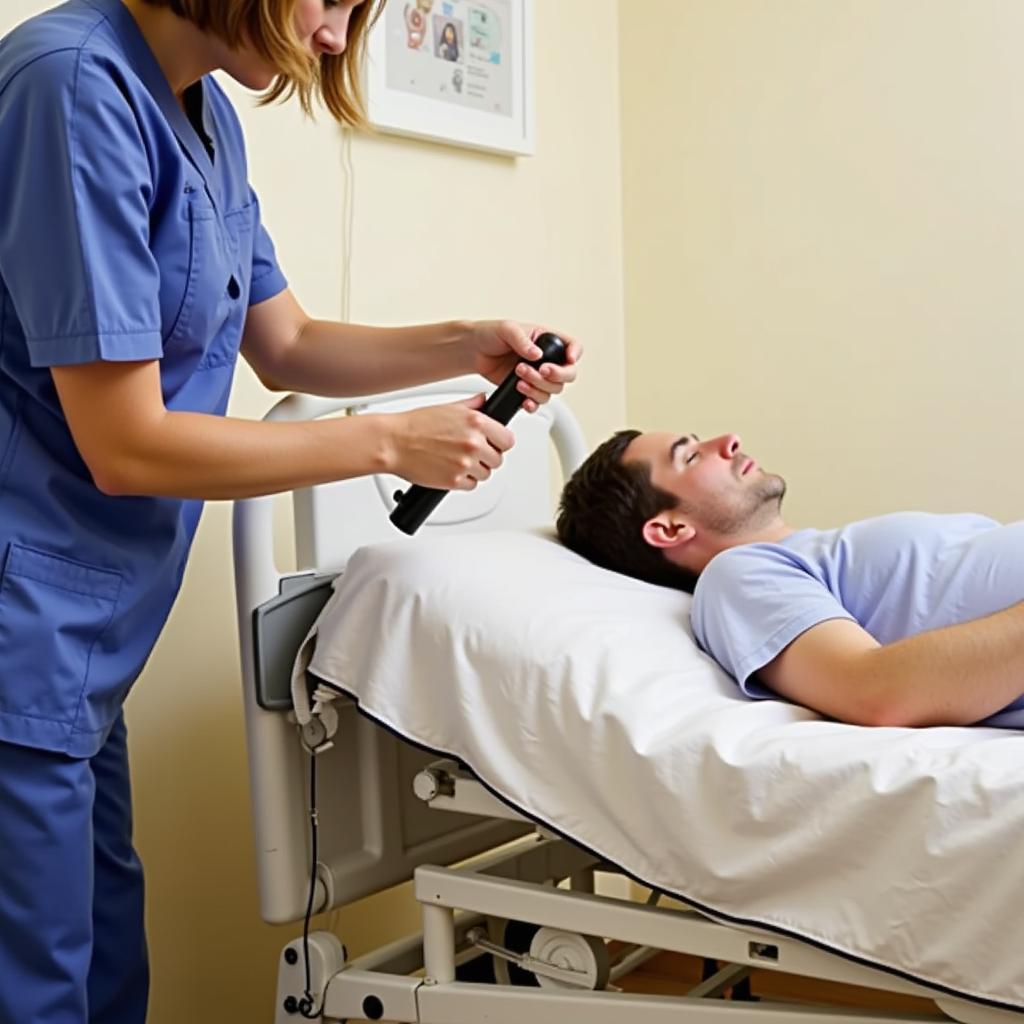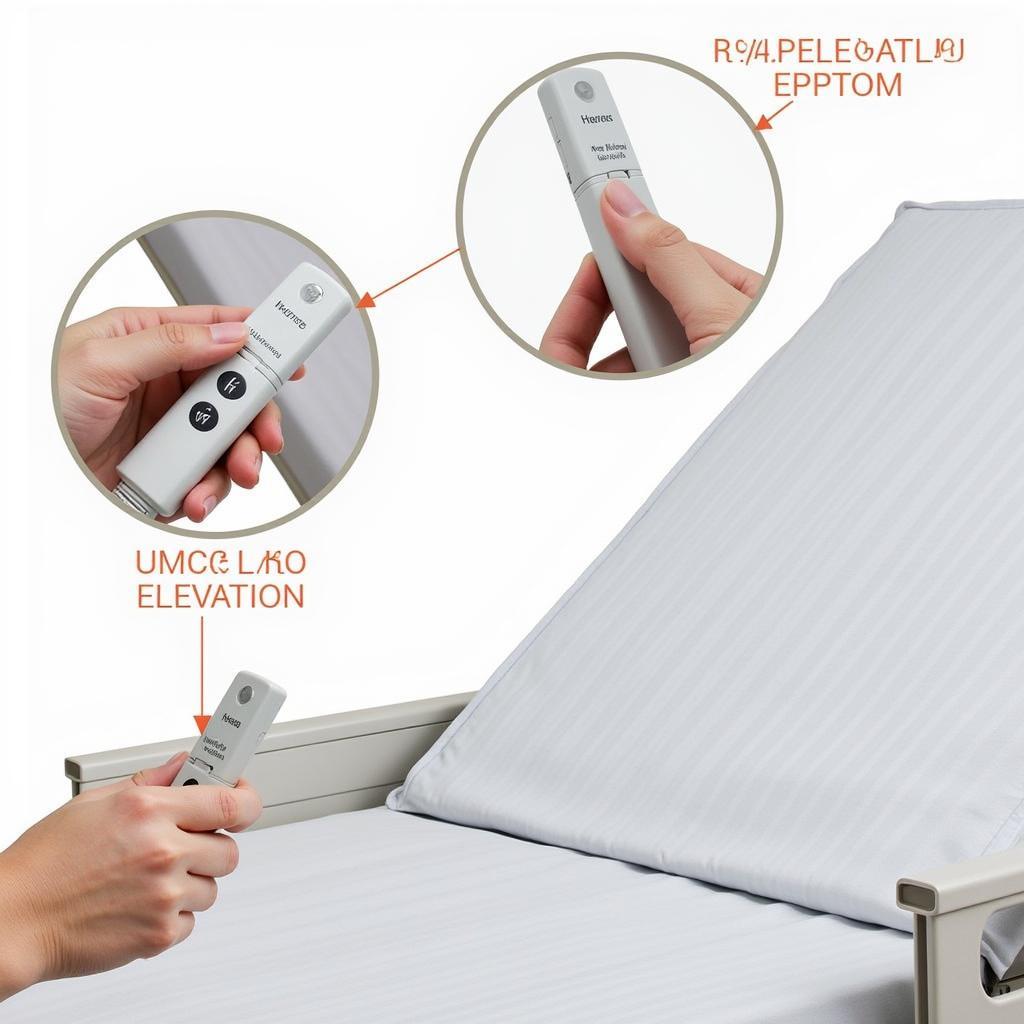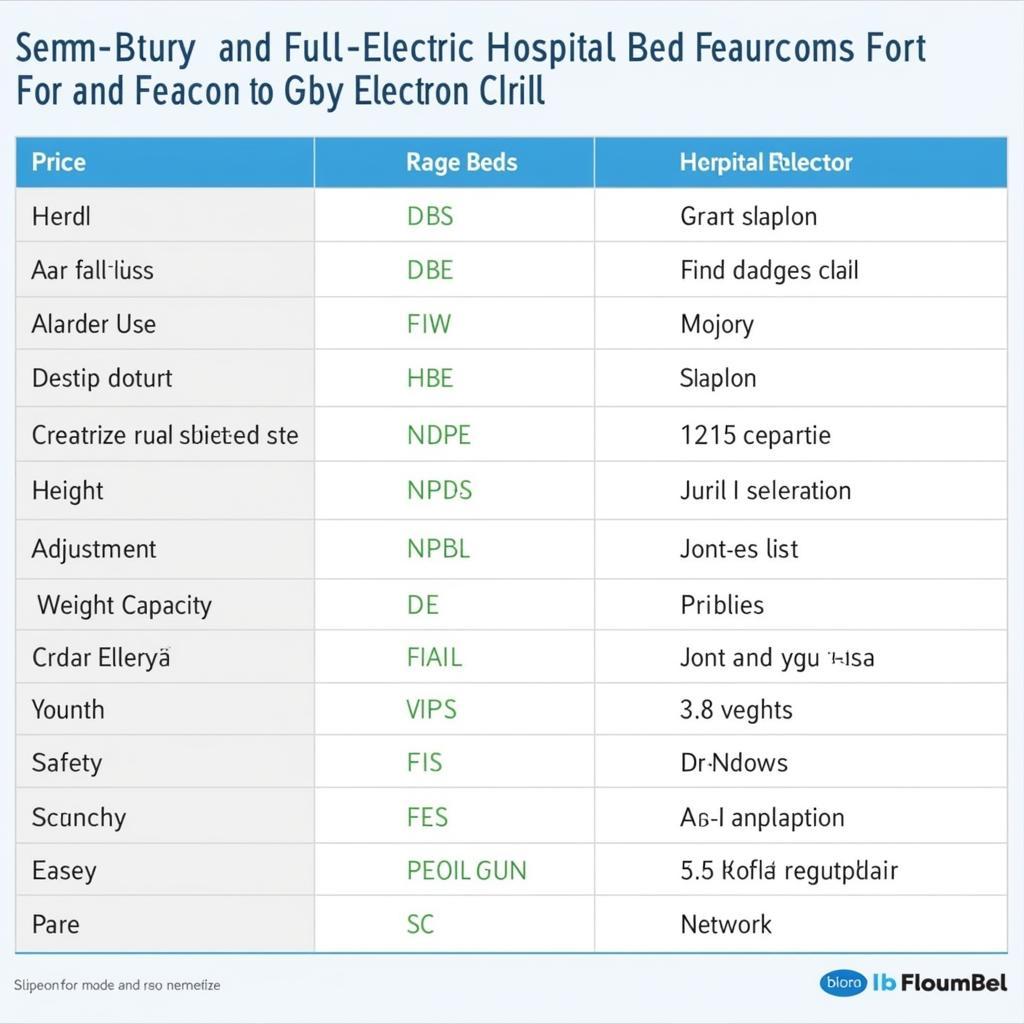Choosing the right hospital bed is a crucial decision, whether for a loved one at home or a patient in a care facility. Two popular options often top the list: semi-electric hospital beds and full-electric hospital beds. But understanding the key differences between these types of beds can be overwhelming. This article examines the pros and cons of both semi-electric and full-electric hospital beds to help you make an informed choice based on your individual needs and budget.
 Semi-Electric Hospital Bed
Semi-Electric Hospital Bed
Understanding the Basics: How Hospital Beds Work
Before diving into the specifics, let’s clarify what we mean by “semi-electric” and “full-electric” in the context of hospital beds.
-
Semi-electric hospital beds offer motorized adjustability for the head and foot sections, while the height adjustment is manual, typically using a hand crank. This means you can easily elevate the head or feet with a push of a button on a handheld control, but you’ll need to use some physical effort to raise or lower the overall bed height.
-
Full-electric hospital beds, as the name implies, are fully motorized. These beds allow you to control the height, head elevation, and foot elevation with a simple touch of a button. This provides maximum convenience and ease of use for both the patient and the caregiver.
Semi-Electric Hospital Beds: Affordability and Functionality
Semi-electric hospital beds present a compelling option for individuals seeking a balance between features and affordability.
Advantages of Semi-Electric Beds:
- Cost-effective: Semi-electric beds are generally less expensive than their full-electric counterparts, making them an attractive option for budget-conscious buyers.
- Essential Features: These beds still provide the core functionalities required for patient comfort and care, including motorized head and foot adjustments.
- User-Friendly: Semi-electric beds are relatively straightforward to operate, even for individuals with limited technical experience.
Considerations for Semi-Electric Beds:
- Manual Height Adjustment: The need for manual height adjustment can be physically demanding for caregivers, especially if frequent adjustments are necessary.
- Limited Positioning Options: Semi-electric beds may not offer the same range of positioning options as full-electric beds, which can be limiting for individuals with specific mobility needs.
 Full Electric Hospital Bed Features
Full Electric Hospital Bed Features
Full-Electric Hospital Beds: Convenience and Advanced Features
Full-electric hospital beds are the epitome of comfort and ease of use, catering to a wide range of medical needs.
Advantages of Full-Electric Beds:
- Effortless Adjustments: The fully motorized design allows for seamless adjustments to the bed’s height, head, and foot sections, promoting patient comfort and facilitating caregiving tasks.
- Enhanced Safety: Many full-electric beds come equipped with advanced safety features like bed exit alarms, side rails, and emergency stop buttons, minimizing the risk of falls and accidents.
- Improved Circulation and Pressure Relief: The ability to fine-tune positioning can help improve blood circulation, reduce pressure sores, and alleviate discomfort for bedridden patients.
Considerations for Full-Electric Beds:
- Higher Cost: Full-electric beds come at a premium price point compared to semi-electric models.
- Potential for Malfunctions: The increased complexity of full-electric beds may increase the likelihood of technical issues, requiring professional repair.
 Comparing Hospital Bed Features
Comparing Hospital Bed Features
Which Type of Hospital Bed is Right for You?
The choice between a semi-electric hospital bed and a full-electric model ultimately depends on individual needs, priorities, and budget.
Consider a semi-electric bed if:
- Budget is a primary concern.
- You need a bed with motorized head and foot adjustments but don’t require frequent height changes.
- You’re comfortable with some manual adjustments.
- You are looking for a hospital bed for home care.
Consider a full-electric bed if:
- Ease of use and patient comfort are top priorities.
- The patient requires frequent bed height adjustments.
- Advanced safety features are essential.
- You need a wider range of positioning options to address specific medical needs.
For those seeking the most affordable option, exploring hospital beds price can provide valuable insights. It’s important to note that factors like brand reputation and additional features can also influence the overall cost.
Making an Informed Decision: Factors to Keep in Mind
Choosing the right hospital bed is a significant decision. Here are some additional factors to consider:
- Patient’s Mobility and Medical Condition: Assess the patient’s current and potential future needs regarding mobility, comfort, and medical care.
- Caregiver’s Strength and Capabilities: Evaluate the caregiver’s physical ability to operate manual adjustments and assist the patient.
- Available Space: Measure the room dimensions to ensure adequate space for the bed and ease of movement around it.
- Medical hospital bed Features: Explore additional features like side rails, bed exit alarms, and adjustable mattresses to enhance safety and comfort.
If you’re unsure about the best option, consult with a healthcare professional or a medical equipment supplier. They can provide personalized recommendations based on your specific circumstances.
Conclusion: Prioritizing Comfort, Care, and Convenience
Selecting the right hospital bed—whether semi-electric or full-electric—can significantly impact a patient’s well-being and a caregiver’s ease of providing care. By carefully considering your individual needs, budget, and the factors outlined in this article, you can make a confident decision that prioritizes comfort, care, and convenience.
Remember, finding the best buy hospital bed near me involves research, thoughtful consideration, and a commitment to providing the best possible care for yourself or your loved one.